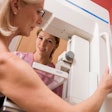
REA Healthcare Strategies

The interactive environment serves to ingrain your information in the minds of the audience. The audience may even become spokespeople for your program. Conferences do require a great deal of planning and resources, so it's important to understand the key components and create a task list.
Objectives
Objectives should guide the planning. How do you want to present your program? Should your conference be geared to doctors or the public? Obviously, the two audiences are vastly different, so your conference must be tailored to one or the other -- or you can organize two separate conferences.
Location
Based on the needs of the audience, it’s important to select a central location with adequate parking. Hospitals or local colleges will have meeting space available. If the group is small, a restaurant with a private dining room that can handle your audiovisual needs may be sufficient.
Promotion
What if you threw a party and no one came?
Promotion is an essential tool. Many options are available for promoting a seminar to the public. Send announcements to TV, radio, and newspapers. They will generally have a calendar section or upcoming events segment, and these listings are usually free (free is good).
Of course, be sure to include press releases to local reporters and paid advertising to promote the conference. Create an announcement (flyer or poster) that can be displayed in waiting rooms in order to inform patients about the conference.
If you are targeting doctors, send a letter from your medical director, accompanied by a brochure about the conference. Be sure to include CME credit. One or two weeks before the conference, a reminder letter should be sent to anyone who hasn’t confirmed. One day before the conference, call physicians who are scheduled to attend with a courtesy reminder to minimize no-shows. This is crucial, as you can expect at least a 30% no-show rate, especially if there isn’t a registration fee. It is always helpful to inform all of the doctors in your practice about the upcoming conference, so they can promote it to referring physicians.
Planning the presentation
Develop an overview of the presentation and discuss this with the speaker. It’s important to be organized and to plan for potential questions from your audience. Computer presentations are usually well received and look professional. The presentation may be developed very easily using off-the-shelf presentation software.
Remember to structure your presentation so that it describes the program briefly and features all of the key points of the program. The key points should be directed to the specific needs of the audience, with an explanation of how the program will meet their needs. Keep the presentation simple. Focus on your message, rather than using excessive special effects such as flashing words or rotating text.
It’s all in the details
The conference represents your practice to an audience that is very interested in your program. It’s your opportunity to shine! Provide light refreshment or a meal, depending on your budget. Ensure that the meeting room is attractive and suits your purpose.
Be sure to plan for no-shows in your meeting room layout. I usually drop the confirmed number by 10%-15% and have yet to be surprised by more attendees. You should have space and chairs available if you have overflow (a Plan B that can be quickly and quietly executed, if need be).
Develop a list of audio-visual needs. The AV equipment should be tested before the conference -- not five minutes before your presentation. Testing should occur at least several hours before the conference in case equipment needs to be repaired or replaced. You can also provide handouts and literature for the audience. Anticipate as much as you can and your conference will be a success.
Lifesavers
The most important rule about events is that at least one thing will go wrong! I’m not trying to be a pessimist here, just a realist. The clever event planner has to plan for the unexpected. Your audience need never know what didn’t go according to plan.
If the presentation is on a laptop, bring a second computer. While you’re at it, create a backup file of the presentation, just in case. Print out the presenter’s notes -- if a critical piece of audio-visual equipment goes down, the presentation can still go on. Remember, it’s better to be prepared than surprised.
Finally, relax and enjoy yourself! You set the tone for the event. You’ve planned meticulously, you’ve got an interesting topic, and you’re sharing your center’s expertise with a captive audience. Congratulations!
By Rosy RiosAuntMinnie.com contributing writer
November 5, 2002
REA Healthcare Strategies is a consulting firm focusing on healthcare marketing and practice management. It specializes in developing marketing programs for practices and vendors. It also has extensive experience in providing medical practices with strategic planning, project management, and customer-service training programs.
Related Reading
Building a successful new imaging center program, October 8, 2002
Imaging center marketing: Don't trade dollars for doughnuts, September 18, 2002
Performance metrics can help maximize investment returns, July 29, 2002
Revenue optimization, compliance assurance provide practice Rx, July 15, 2002
The strategic advantages of radiology networks, July 15, 2002
Copyright © 2002 REA Healthcare Strategies


















